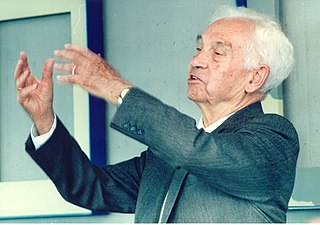
Ernst Walter Mayr was one of the 20th century's leading evolutionary biologists. He was also a renowned taxonomist, tropical explorer, ornithologist, philosopher of biology, and historian of science. His work contributed to the conceptual revolution that led to the modern evolutionary synthesis of Mendelian genetics, systematics, and Darwinian evolution, and to the development of the biological species concept.

The Field Museum of Natural History (FMNH), also known as The Field Museum, is a natural history museum in Chicago, Illinois, and is one of the largest such museums in the world. The museum maintains its status as a premier natural-history museum through the size and quality of its educational and scientific programs, as well as due to its extensive scientific-specimen and artifact collections. The diverse, high-quality permanent exhibitions, which attract up to two million visitors annually, range from the earliest fossils to past and current cultures from around the world to interactive programming demonstrating today's urgent conservation needs. The museum is named in honor of its first major benefactor, the department-store magnate Marshall Field. The museum and its collections originated from the 1893 World’s Columbian Exposition and the artifacts displayed at the fair.
Wilfred Backhouse Alexander was an English ornithologist and entomologist. He was a brother of Horace Alexander and Christopher James Alexander.

Pamela Cecile Rasmussen is a prominent American ornithologist and expert on Asian birds. She was formerly a research associate at the Smithsonian Institution in Washington, D.C., and is based at the Michigan State University. She is associated with other major centers of research in the United States and the United Kingdom.

Rollo Howard Beck was an American ornithologist, bird collector for museums, and explorer. Beck's petrel and three taxa of reptiles are named after him, including a subspecies of Galápagos tortoise, Chelonoidis nigra becki from Volcán Wolf. A recent paper by Fellers examines all the known taxa named for Beck. Beck was recognized for his extraordinary ability as a field worker by Robert Cushman Murphy as being "in a class by himself," and by University of California at Berkeley professor of zoology Frank Pitelka as "the field worker" of his generation.
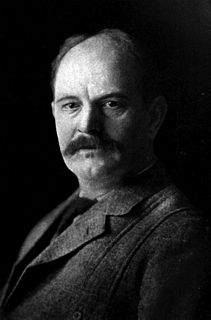
Frank Michler Chapman was an American ornithologist and pioneering writer of field guides.

Clinton Hart Merriam was an American zoologist, mammalogist, ornithologist, entomologist, ethnographer, and naturalist.
Austin Loomer Rand was a Canadian zoologist.

Anton Reichenow was a German ornithologist and herpetologist.
Herbert Christopher Robinson was a British zoologist and ornithologist. He is principally known for conceiving and initiating the major ornithological reference The Birds of the Malay Peninsula.
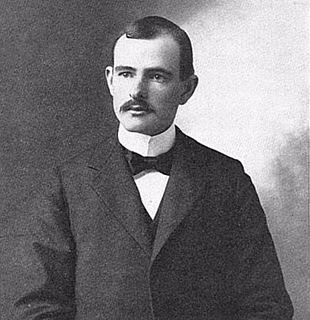
Joseph Grinnell was an American field biologist and zoologist. He made extensive studies of the fauna of California, and is credited with introducing a method of recording precise field observations known as the Grinnell System. He served as the first director of the Museum of Vertebrate Zoology at the University of California, Berkeley from the museum's inception in 1908 until his death.

George Kruck Cherrie was an American naturalist and explorer. He collected numerous specimens on nearly forty expeditions that he joined for museums and several species have been named after him.
Karl Patterson Schmidt was an American herpetologist.
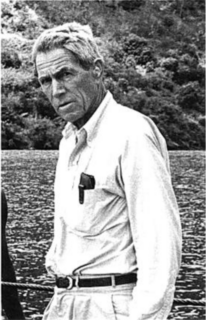
James Cowan Greenway was an American ornithologist. An eccentric, shy, and often reclusive man, his survey of extinct and vanishing birds provided the base for much subsequent work on bird conservation.

Averil Margaret Lysaght was a New Zealand biologist, science historian and artist, best known for her scholarly work on Joseph Banks.
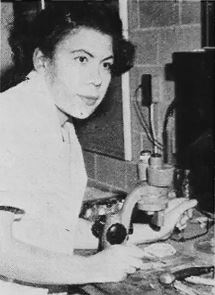
Margaret James Strickland Collins was an African-American child prodigy, entomologist (zoologist) specializing in the study of termites, and a civil rights advocate. Collins was nicknamed the “Termite Lady” because of her extensive research on termites. Together with David Nickle, Dr. Collins identified a new species of termite called Neotermesluykxi. When Collins earned her PhD., she became the first African American female entomologist and the third African American female zoologist.
The James Simpson-Roosevelt Asiatic Expedition was a 1925 expedition sponsored by the Field Museum of Natural History and organized by Kermit Roosevelt and his brother Theodore Roosevelt, Jr.
Wolfrid Rudyerd Boulton was an American ornithologist who worked extensively in Africa. Boulton held positions at the American Museum of Natural History and the Carnegie Museum of Natural History and traveled widely on expeditions to Africa. With his first wife, ethnomusicologist Laura Boulton, he made the first recordings of African tropical bird calls. Boulton was recruited into the Office of Strategic Services (OSS) during the Second World War because of his knowledge of Africa and his experience in foreign travel. He was responsible for monitoring the supply of uranium ore from the Belgian Congo for the Manhattan Project. Boulton transferred to the Central Intelligence Agency (CIA) in 1947 and resigned in 1958.

Margery Claire Carlson was an American botanist and a professor at Northwestern University. After earning a Ph.D. in botany and becoming the first full-time female professor at Northwestern, she went on a number of international scientific expeditions to Central America in order to collect plant specimens and find new species. Her relationship as a research assistant at the Field Museum of Natural History meant that a majority of her plant collection was donated to the museum and a special botany collection was created for her there. Carlson had a long history of involvement in the conservation movement and was honored with multiple awards, along with a nature preserve being named after her.
Danilo S. Balete, also known as Danny Balete, is a Filipino zoologist and biologist.















